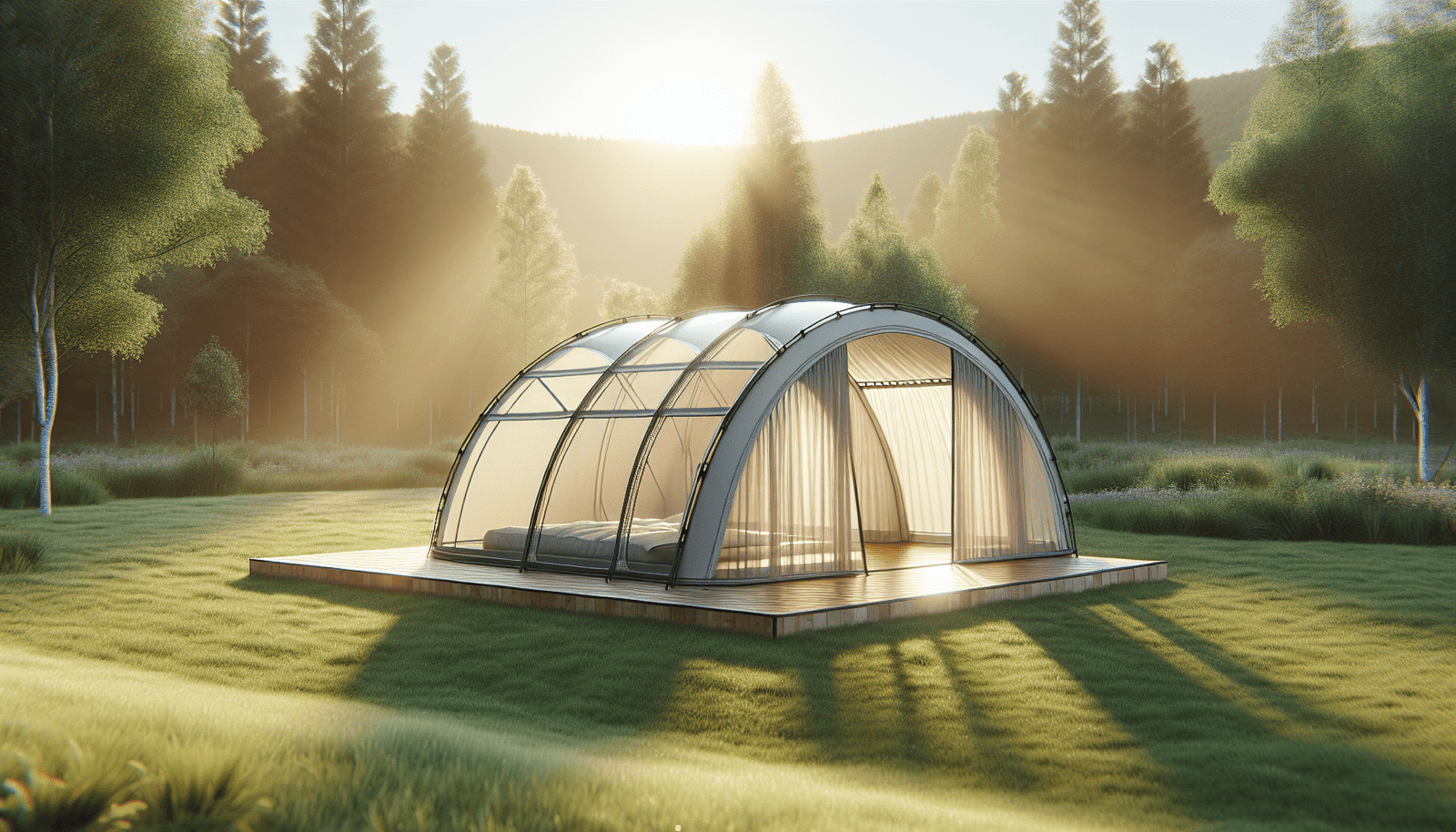Welcome to your ultimate guide on finding the coolest tent for your outdoor adventures! In this article, “Which Tent Stays The Coolest?”, you’ll discover the best tents designed to keep you cool during those hot summer camping trips. You’ll delve into features like ventilation, color, material, and innovative designs that make a significant difference in temperature management. By the end, you’ll be well-equipped with tips on selecting a tent that ensures a breezy and comfortable camping experience, no matter how high the mercury rises. Have you ever wondered which tent stays the coolest during your outdoor adventures?
Choosing the right tent can make or break your camping experience, especially when the sun is blazing and temperatures are reaching for the skies. A cool tent not only ensures comfort but can also be crucial to your safety and health during the heat of the day.
So, how do you find that perfect tent to keep you cool? Let’s delve deep into everything you need to know about the coolest tents available.
Understanding How Heat Affects Tents
Before diving into specific tent types or brands, it’s essential to grasp the fundamentals of how heat can affect a tent. Different materials, designs, and colors all play a role in determining how hot or cool your tent will be.
Tent Materials
The material your tent is made from significantly impacts its internal temperature. Let’s break down the most common materials:
-
Cotton (Canvas): A traditional choice known for its breathability and insulation, cotton tents stay cooler in direct sunlight compared to synthetic ones. However, they are heavier and bulkier.
-
Nylon: Lightweight and affordable, nylon tents are a popular choice but tend to retain more heat.
-
Polyester: Similar to nylon in its lightweight properties but slightly better at UV resistance. Still, it isn’t as breathable as cotton.
-
Reflective Fabrics: Some modern tents utilize reflective materials to bounce back sunlight, keeping the interior cooler.
| Material | Breathability | Weight | Coolness Factor in Direct Sunlight |
|---|---|---|---|
| Cotton (Canvas) | High | Heavy | Excellent |
| Nylon | Low | Light | Poor |
| Polyester | Medium | Light | Fair |
| Reflective | Variable | Varies | Good to Excellent |
Tent Design
Another crucial aspect is the tent’s design, which can drastically affect air flow and ventilation.
- Dual-Wall Tents: These come with an outer rainfly and an inner breathable layer, providing better insulation against the heat.
- Single-Wall Tents: Typically lighter but less effective in cooling due to the lack of an additional breathable layer.
- Ventilation Options: Tents with ample vents and mesh windows promote better airflow, helping to reduce internal temperatures.
Tent Color
The color of your tent plays a subtle but significant role. Darker colors absorb more heat, making your tent warmer, while lighter colors reflect sunlight, keeping it cooler.
Features to Consider for a Cool Tent
Knowing the basics is one thing, but what specific features should you look for when shopping for a tent that stays cool?
UV Protection
Tents with UV-resistant coatings can help block harmful rays. This also helps in keeping the internal temperature lower.
Ventilation
Look for tents with multiple ventilation points. Mesh windows, roof vents, and large doors can significantly improve airflow.
Reflective Rainfly
Some tents come with a reflective rainfly that helps bounce back sunlight, keeping your tent cooler.
Room Dividers
A tent with room dividers can help manage the internal space better, allowing for improved airflow within different sections.
| Feature | Description |
|---|---|
| UV Protection | Helps block harmful rays and reduce internal temperatures |
| Ventilation | Multiple ventilation points for better airflow |
| Reflective Rainfly | Reflects sunlight to keep the tent cooler |
| Room Dividers | Manages internal space to allow better airflow within different sections |
Best Tents That Stay Cool
Now that we have a good understanding, let’s review some of the best tents known for their cooling capabilities.
Cool Tent #1: [Name and Model]
Material: Made of high-quality cotton canvas, this tent prides itself on excellent breathability and insulation.
Design: The dual-wall design, along with multiple vents and mesh windows, ensures ample airflow. Its light color reflects sunlight effectively, adding to its cooling properties.
Key Features:
- UV-resistant coating
- Reflective rainfly
- Large mesh windows and roof vents
Cool Tent #2: [Name and Model]
Material: Constructed from durable polyester with a reflective surface, this tent is lightweight and easy to set up.
Design: Single-wall with extra-large vents to promote airflow. The tent also has a weather-resistant coating, offering protection without compromising ventilation.
Key Features:
- UV protection
- Reflective material
- Compact and easy to transport
Cool Tent #3: [Name and Model]
Material: This tent uses a hybrid of polyester and nylon with an additional breathable layer, combining the best of both worlds.
Design: Dual-wall with room dividers and multi-point ventilation make it a standout for keeping cool.
Key Features:
- Advanced UV protection and reflective technology
- Several large openings for airflow
- Removable room dividers
| Tent | Material | Design | Key Features |
|---|---|---|---|
| Tent #1 | Cotton Canvas | Dual-wall, Multiple Vents | UV-resistant, Reflective Rainfly, Large Mesh Windows |
| Tent #2 | Polyester | Single-wall, Large Vents | UV Protection, Reflective Material, Weather-resistant |
| Tent #3 | Poly/Nylon Hybrid | Dual-wall, Room Dividers | Advanced UV Protection, Multi-point Ventilation, Removable Room Dividers |
Tips for Staying Cool in Your Tent
Even with the best tent, there are additional steps you can take to ensure your camping experience remains cool and comfortable.
Choose the Right Campsite
Selecting a shaded area will greatly affect your tent’s temperature. Try to pitch your tent under trees or next to natural windbreaks.
Set Up During the Cooler Times of Day
Setting up your tent during the cooler parts of the day, like early morning or late afternoon, can help you avoid trapping heat.
Use a Tarp
A reflective tarp above your tent can add an additional layer of protection from direct sunlight, keeping your tent cooler.
Hydrate and Wear Lightweight Clothing
Staying hydrated and wearing light, breathable clothing can also make a significant difference in your comfort level.
The Importance of a Ground Cloth
A ground cloth or footprint not only protects your tent’s floor but can also add an extra layer of insulation from the heat radiating from the ground. Reflective ground cloths are an excellent option for keeping your tent cooler.
| Tip | Description |
|---|---|
| Choose the Right Campsite | Set up in shaded areas and natural windbreaks |
| Set Up During Cooler Times | Pitch your tent in the early morning or late afternoon to avoid trapping heat |
| Use a Tarp | A reflective tarp can act as an additional shield against direct sunlight |
| Hydrate and Wear Lightweight Clothing | Stay hydrated and opt for light, breathable attire |
| Ground Cloth | Protects the tent’s floor and adds an extra layer of insulation from ground heat |
Common Misconceptions
It’s essential to clear up some common misconceptions about tents and cooling.
Bigger Tents Are Cooler
While larger tents do provide more room for air to circulate, they can also trap heat if not well-ventilated. It’s not the size but the ventilation and material that make the difference.
All Reflective Tents Are the Same
Not all reflective materials are created equal. Some are more effective than others, so always check for customer reviews and specifics on the material used.
Any Shade Will Do
Not all shade is created equal. While some natural shade from trees is ideal, artificial shades like building shadows can reflect heat and make the tent warmer.
Conclusion
Choosing the coolest tent involves a mix of selecting the right materials, design, and features. However, it’s also about making smart camping choices, like setting up in the right spot and maintaining good airflow.
By understanding the intricacies of tent materials and design, you can make an informed choice that will keep you cool and comfortable on your outdoor excursions. Remember, a well-ventilated, UV-protected, and reflective tent is your best ally against the heat.
So, next time you find yourself planning a camping trip, you’ll know which tent stays the coolest and how to set it up for maximum comfort. Happy camping!

